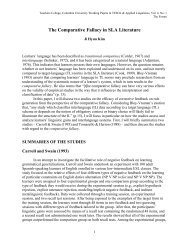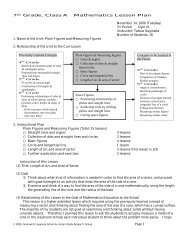UNICEF Mongolia - Teachers College Columbia University
UNICEF Mongolia - Teachers College Columbia University
UNICEF Mongolia - Teachers College Columbia University
You also want an ePaper? Increase the reach of your titles
YUMPU automatically turns print PDFs into web optimized ePapers that Google loves.
EXECUTIVE SUMMARY<br />
This study examined recruitment into teaching, teacher development and retenon of teachers<br />
in <strong>Mongolia</strong>. It included a desk review of relevant policies and regulaons, an empirical study in 28<br />
schools located in Ulaanbaatar and in five provinces, as well as individual interviews with teachers,<br />
school administrators, policy analysts, and government officials. Special emphasis was placed on the<br />
2007 teacher salary reform. The study examined changes over me (before and aer 2007) and also<br />
invesgated how this parcular reform was implemented at the school level.<br />
RESEARCH DESIGN<br />
Four types of informaon were included in this study:<br />
• EMIS data as well as other stascal informaon on the composion of the teaching<br />
workforce<br />
• Informaon on recruitment into teaching and pre-service teacher educaon, with a special<br />
emphasis on the largest teacher training instuon in the country, that is, the <strong>Mongolia</strong>n State<br />
<strong>University</strong> of Educaon (MSUE)<br />
1<br />
2<br />
3<br />
4<br />
5<br />
6<br />
• Regulaons and decrees with regard to teacher workload, salary, licensing regulaons, inservice<br />
training, promoon, bonus systems, etc.<br />
• School-level data on actual teaching load, total teaching pay, actual in-service training,<br />
oversupply/undersupply of teachers, actual bonus payments, etc.<br />
The school-level data cover interviews with educaon managers (N=35) and teachers (N=123), as well<br />
as a series of documents collected at the school level, such as school lesson schedules by teacher name,<br />
qualificaons of teachers and subject(s) taught, lesson plans, teachers’ teaching hours lists, teachers’<br />
evaluaon and bonus allowance forms, and examples of contracts. A total of 28 schools were visited:<br />
nine city schools (in Ulaanbaatar and Erdenet), eight aimag-center schools, and eleven soum-center<br />
schools in Kheni, Khovd, Arkhangai and Omnogobi provinces.<br />
THE ABSOLUTE AND RELATIVE TEACHER SALARY IN MONGOLIA<br />
The average monthly base salary of school teachers in <strong>Mongolia</strong> was 324,292 MNT (270 USD) for the<br />
2010/11 school year. The total monthly pay was 374,727 MNT (299 USD) if addional teaching hours,<br />
supplements for funcons, supplements for rank, and bonuses for a teacher of average income are<br />
factored in. Currently, the base sale salary accounts for 86.5 percent of total teacher pay. As the PETS<br />
<strong>Mongolia</strong> Study demonstrated in 2005 (that is, before the salary reform of 2007), the base salary of a<br />
teacher only amounted to 52-56 percent of the total pay; the rest of the income came mainly from the<br />
high amount of addional teaching hours as well as the numerous salary supplements.<br />
The large rao of the base salary as a percentage of the total pay (86.5 percent) was an explicit goal of<br />
the 2007 salary reform. Consequently, teacher salary has become more predictable and transparent,<br />
and teachers are less vulnerable to the arbitrary decisions of school administrators. The absolute base<br />
TEACHERS IN MONGOLIA: AN EMPIRICAL STUDY ON RECRUITMENT INTO TEACHING,<br />
PROFESSIONAL DEVELOPMENT, AND RETENTION OF TEACHERS<br />
9



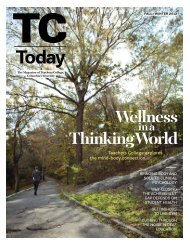

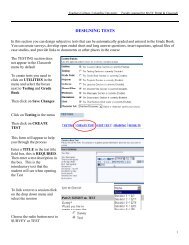


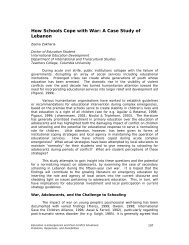
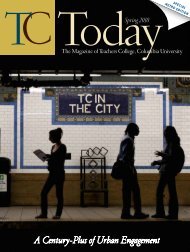
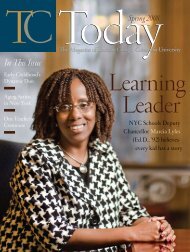
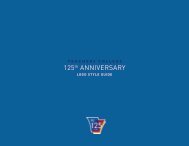


![TC Tod[...].pdf - Teachers College Columbia University](https://img.yumpu.com/27074883/1/190x252/tc-todpdf-teachers-college-columbia-university.jpg?quality=85)

